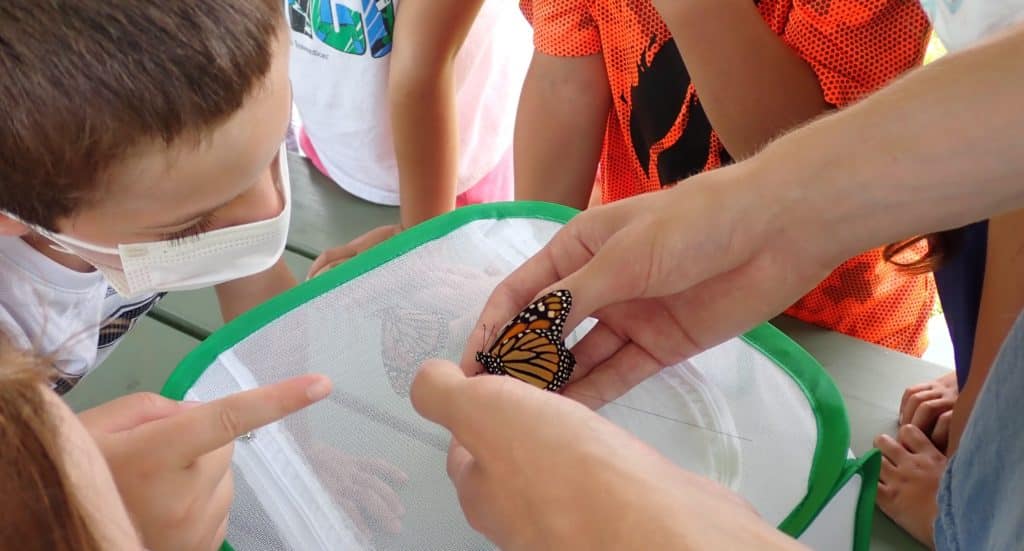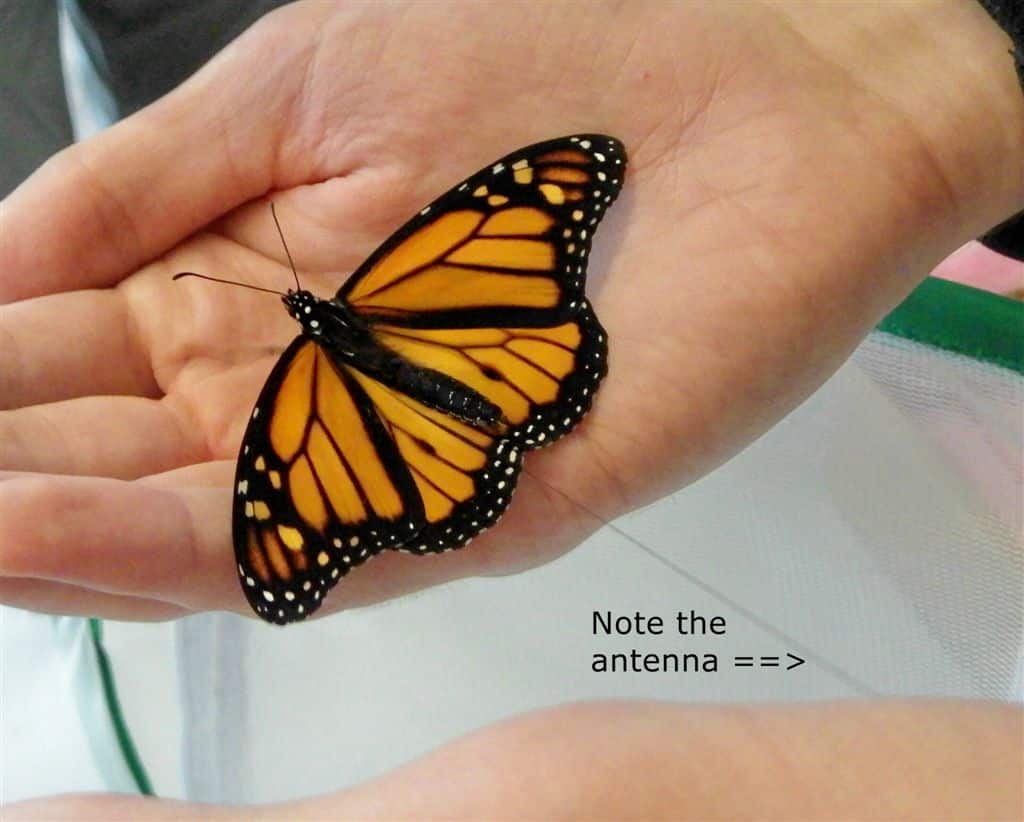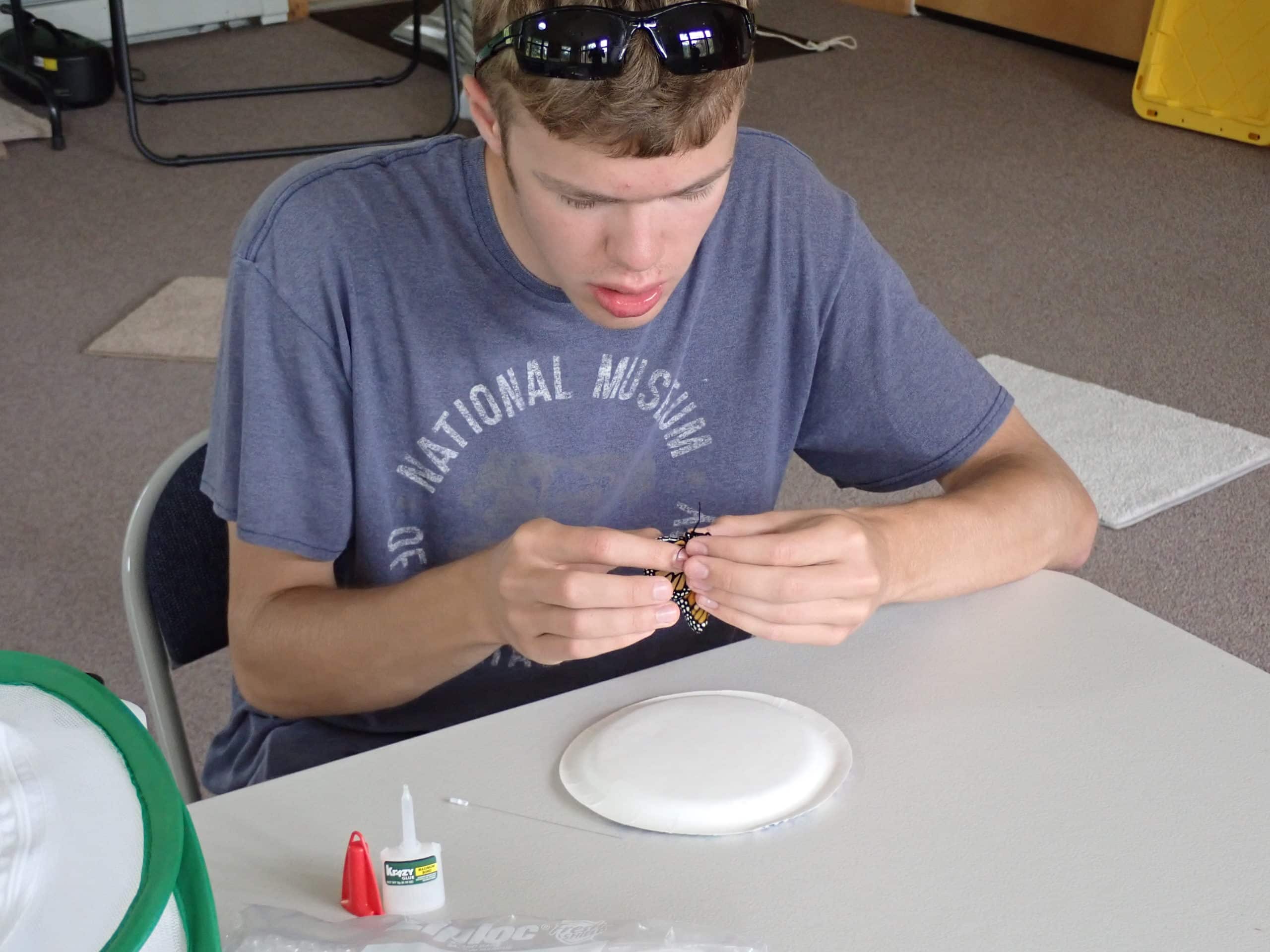
Once inside the front door of the Nature Center, summer visitors to the Fields Pond Audubon Center have been greeted by a display of Monarch Butterflies. Beginning as either eggs or small caterpillars, we collected these from the plethora of milkweed plants that grow all around the Nature Center. To date we’ve raised and fledged about two dozen Monarchs this summer.
Some of the adult Monarchs that have been released at Fields Pond have been equipped with special nanotag transmitters that will enable researchers to track the butterflies as they move and migrate. Receiver stations, like the newly installed Motus station here at Fields Pond, will pick up the unique signal of each nanotag as tagged wildlife move within the receiver’s detection range (which is about nine miles with a clear sight).
The Monarch Butterfly tagging project at Fields Pond is being conducted by Wesley Hutchins, a sophomore at the University of Maine, who is interested in knowing how long Monarchs stay in the area where they lived as caterpillars. With extreme care and precision, Wesley has mounted each tiny nanotag onto the abdomens of the butterflies that meet the strict criteria for transmitter deployment. Weight is the key here, and only butterflies weighing 0.45 grams or more are suitable for carrying the small transmitter and antennae, which weigh a mere 0.13 grams. A Monarch Butterfly’s weight will be determined by the size of the larva when it pupated; so larger caterpillars make for larger butterflies.

Wesley’s interest in butterflies and other insects began at an early age. His grandmother, a second-grade teacher in Old Town, would take her classes to Fields Pond each year for field trips, and she raised Monarch Butterflies in her school classroom. Wesley would also accompany his mother on trips to Fields Pond, where she volunteered as a teacher for education programs. His early interest in insects was additionally supported by participating in field trips led by the Maine Entomological Society, where older members encouraged his curiosity and identification skills.
This summer Wesley generously shared his time and enthusiasm for insects with our summer campers at Fields Pond, passing along his interest to the next generation. The camp kids were excited to name each butterfly that Wesley tagged and released, as they learned about the fascinating lifecycle of these small but mighty creatures. The annual migration cycle of the Monarch Butterfly is amazing to comprehend as some five generations are needed to complete one annual migration!

Butterflies can be a window into the natural world for both young and old. With 65 documented butterfly species recorded here, the Fields Pond Audubon Center is the perfect setting to celebrate the beauty and diversity of these insects. This Saturday, August 28, from 10am to 2 pm, we will host a Butterfly Festival outside of our Nature Center . This free, family-friendly event will include Monarch tagging, butterfly crafts for kids, a Monarch Butterfly story-walk, and a sale in our Nature Store of all butterfly related items. Come dressed as your favorite butterfly and join the Butterfly Parade at 1 p.m.
